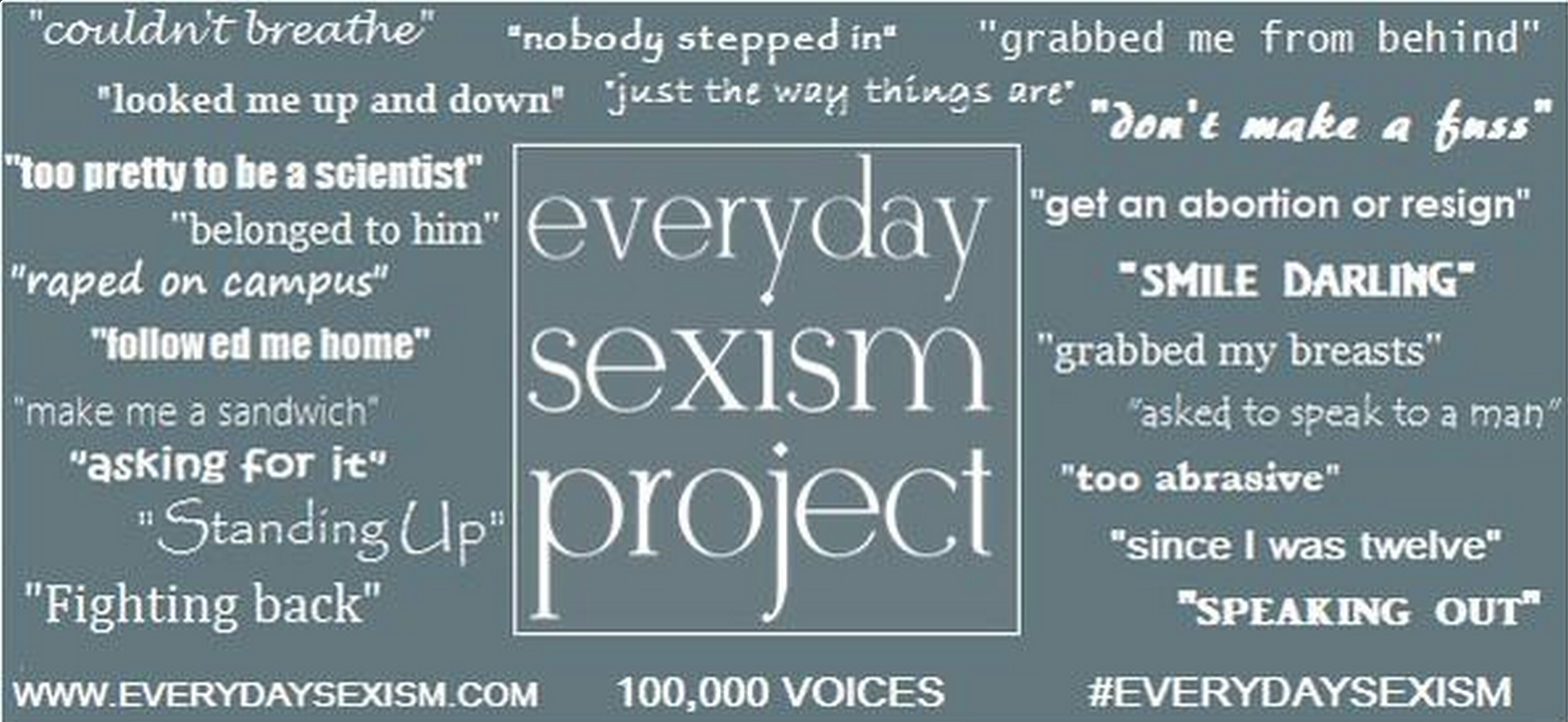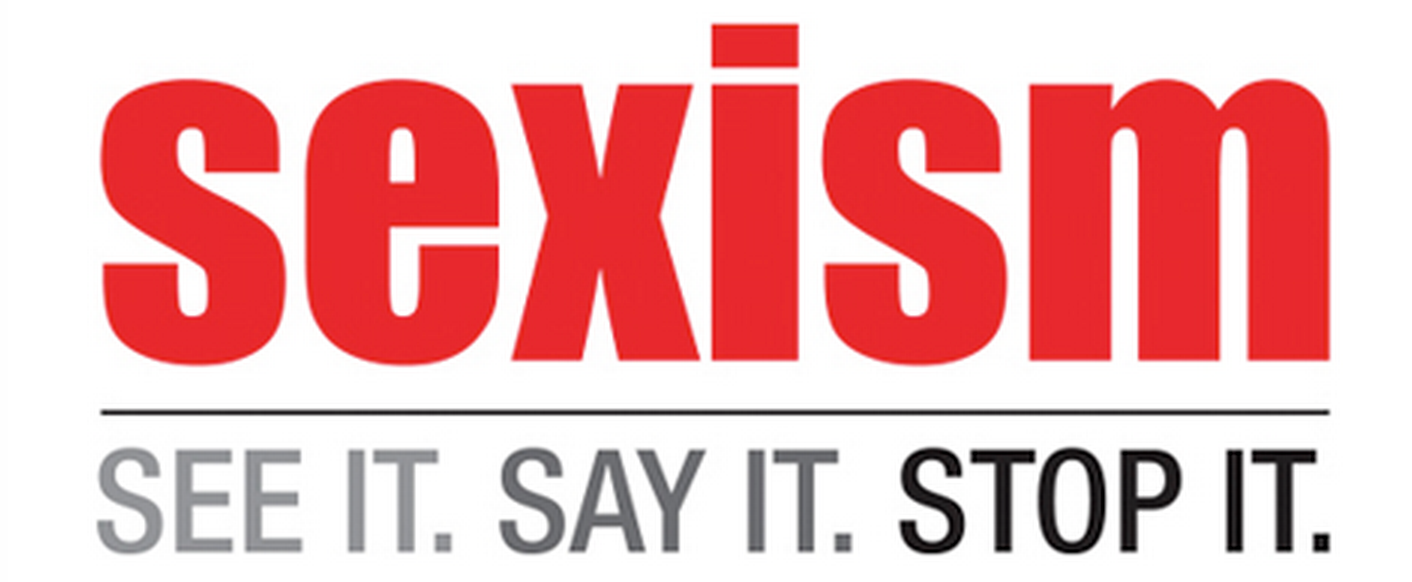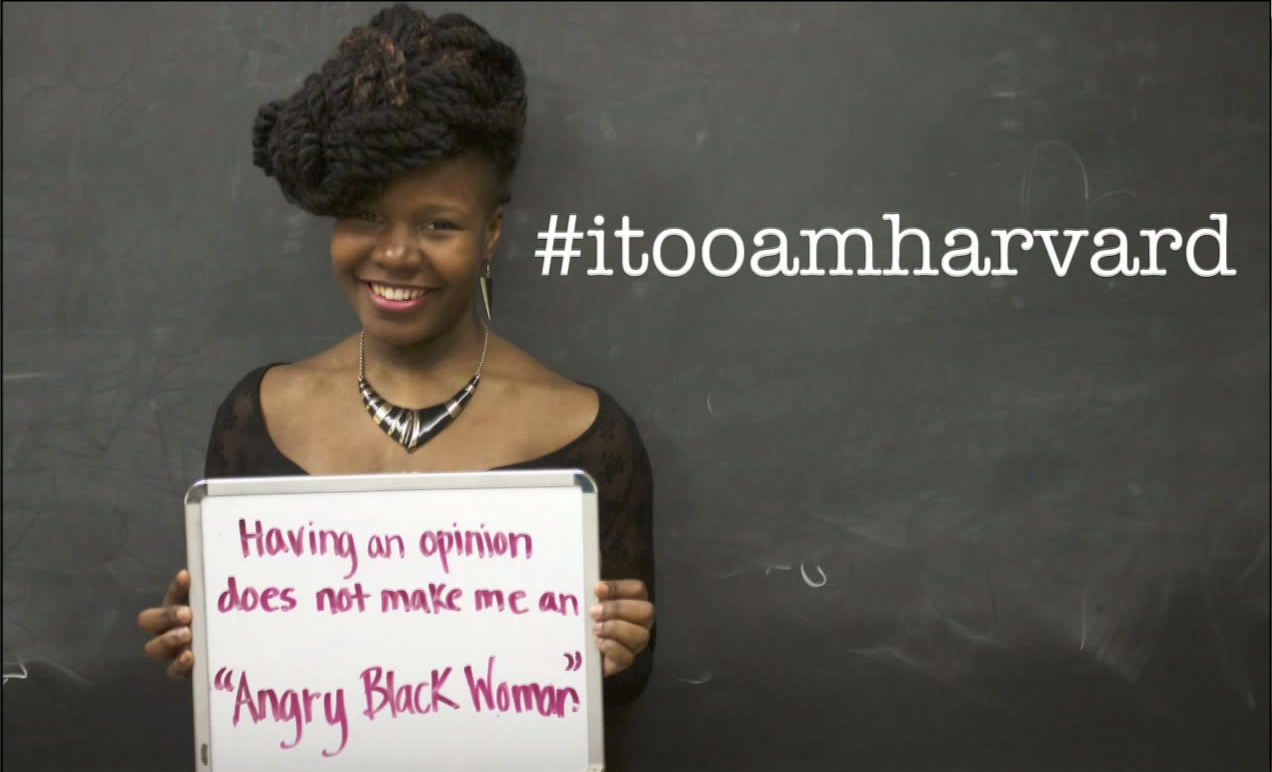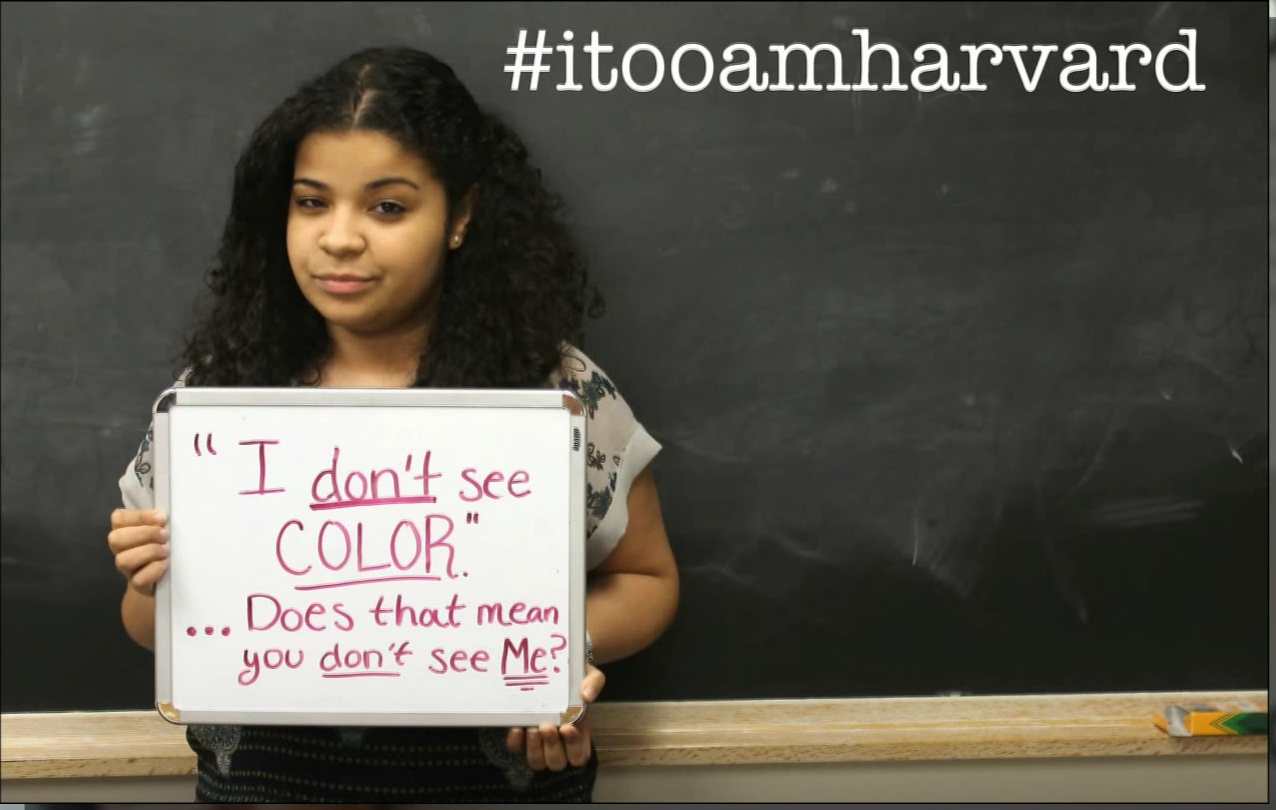 Allying with women in our fight against sexism means one must see the sexism before he/she can fight against it. Sounds obvious and easy, but there are obstacles. Sexism, oppression and exploitation of women are so institutionalized and systemic in our world that it infects each of us. The ingrained prejudice is so embedded, invisible and stealth, often you won't recognize sexism until it's pointed out to you.
Allying with women in our fight against sexism means one must see the sexism before he/she can fight against it. Sounds obvious and easy, but there are obstacles. Sexism, oppression and exploitation of women are so institutionalized and systemic in our world that it infects each of us. The ingrained prejudice is so embedded, invisible and stealth, often you won't recognize sexism until it's pointed out to you.
A few decades ago in college, an exam in my sexual politics class included this question:
A father and son are in a horrible car crash that kills the dad. The son is rushed to the hospital; just as he’s about to go under the knife, the surgeon says, “I can’t operate—that boy is my son!” Explain.
I wanted to get the answer right because the lefty professor all students loved sexually harassed me in class, stalking me off campus to have sex with him. But, I incorrectly identified the surgeon as the boy's second father. It NEVER dawned on me the surgeon
could be his mother.
Decades later, in 2014, still only a minority of people correctly identify his mother as the surgeon. Creative answers are easier to see: "the surgeon was a robot, or a ghost, or “the dad laid down and officials thought he was dead, but he was alive….students theorized the “father” in the car referred to a priest, or the surgeon was “horribly confused,” or, à la the old Dallas TV show, the whole scenario was a dream."
Researchers state the obvious: Bias against women is so strong that we should help people understand "they hold this bias" because the solution is "eternal vigilance" or being alert or watchful for sexism. And so I offer a few tips on how to see sexism because it harms our friends, mothers, grandmothers, sisters and daughters.
Earlier this year, women friends were talking about sexism in our relationships – whether business, social, or friendship. We talked about how we let much of the sexism pass with a shake of our head …until we reach the tipping point when we must speak up, knowing beforehand it may mean the end of our relationship…but hoping he will be one of the incredible men who find it an opportunity to discuss and move forward with stronger ties. In fact, the Everyday Sexism Project provides a space for women around the world to share lived experiences of everyday sexism at the website and twitter page – some are quoted in my diary. A woman created this project because she "realized how much I had become accustomed to simply putting up with just because it was part of ‘being a woman.'" One issue noted is how it "seems to be increasingly difficult to talk about sexism, equality and women's rights."
What can we do to make discussions about sexism easier?
We should remember:


Please also remember sexist behavior does not equal sexist person, and does not mean the man/woman is a bad person. It simply means the person exercising sexism should listen to the woman who was offended, own it with an apology, and then move forward.
After I wrote this two-part series on tips to seeing sexism (words, actions, omissions) I found this Australian campaign focusing on the same messages of what needs to be done in our fight against sexism:

My tips focus on a few general categories of frequent sexism as examples, cross application of ism principles and debunking popular excuses (which function as privileged blinders to seeing sexism and discussed in Part 2 of this series). Future diaries will cover harms from sexism and specific types of sexism.
I cannot speak for other women. If you feel a communication involves potential sexism, please seek out the voices of the women affected.
Tip #1: Intersectionality must be considered when evaluating whether communication is sexist.
 You cannot determine whether any communication is sexist (or really any substantive issue) without considering intersectionality to ensure the communication does not alter or erase our voices, our issues, ourselves. Intersectionality is defined as "The view that women experience oppression in varying configurations and in varying degrees of intensity. Cultural patterns of oppression are not only interrelated, but are bound together and influenced by the intersectional systems of society. Examples of this include race, gender, class, ability, and ethnicity" or the potential intersections of multiple systemic oppressions. I should have more circles, but if you can visualize a circle for each oppression, and all circles interconnected, you will see an area of simultaneity or overlapping of interlocking oppressions that create double or triple jeopardy for some women. For example, a woman of color has at least double jeopardy of "race" and gender, and may face triple or more jeopardies depending on other oppressions.
You cannot determine whether any communication is sexist (or really any substantive issue) without considering intersectionality to ensure the communication does not alter or erase our voices, our issues, ourselves. Intersectionality is defined as "The view that women experience oppression in varying configurations and in varying degrees of intensity. Cultural patterns of oppression are not only interrelated, but are bound together and influenced by the intersectional systems of society. Examples of this include race, gender, class, ability, and ethnicity" or the potential intersections of multiple systemic oppressions. I should have more circles, but if you can visualize a circle for each oppression, and all circles interconnected, you will see an area of simultaneity or overlapping of interlocking oppressions that create double or triple jeopardy for some women. For example, a woman of color has at least double jeopardy of "race" and gender, and may face triple or more jeopardies depending on other oppressions.
"There is no one-size-fits-all type of feminism" because some women will experience multiple oppressions simultaneously but our institutions – social, legal, political etc – do not recognize, preferring to separate. For example, courts over the years have denied discrimination claims based on sex and "race" to Black women, saying they can not create a new "super remedy" but must claim "race" or sex discrimination, not both.
Intersectionality affects determinations of whether a communication is sexist, whether something is recognized as a woman's right, the substance of rights, what issues are important, and how to address issues. In short, affects everything. This video gives a visual explanation!
KEY:
Burgers = Men
Pizza = Women
Cheese Pizza = White Women
Deluxe Pizza = any combination of gay, bi, trans, POC etc., women
Tip #2: Does the communication include stereotyping of women or girls?
The dominant culture has a zillion stereotypes of what it believes appropriate for all women, such as physical characteristics, roles, rights, jobs, feelings or beliefs.


Stereotyping can be expressly negative, like women are too emotional or cognitive skills inferior. Stereotyping can also be ostensibly positive, like benevolent sexism, which some men don't even recognize as sexism.
Whether a stereotype exists, and its nature and impact, differ among women, which is why intersectionality is important. Some stereotypes are about white women only, such as placing women on a pedestal. While this benevolent sexism can have beneficial impacts, it mostly burdens, restrains and oppresses women and excludes women from activities considered inconsistent with pedestal status. It is also used to "justify" different treatment of WOC. For example, when a white woman/girl is missing, the media and police jump into action, in part because pedestal status means "protection" of WW. But the same diligence is not shown when WOC is missing.
 Other stereotypes may not be sexist when used with WW, but very sexist when used with WOC and/or LGBTQ women. What constitutes sexism often changes in terms of degree and impact depending on the women targeted.
Other stereotypes may not be sexist when used with WW, but very sexist when used with WOC and/or LGBTQ women. What constitutes sexism often changes in terms of degree and impact depending on the women targeted.
Some stereotypes apply only to WOC as racialized sexism:
The fiery Latina. The supersmart (yet subservient) Asian woman. The sassy, strong black woman.

Stereotypes of WOC's sexuality increase the risk of rape and sexual assault. These same racist/sexist stereotypes say WOC are legally "unrapeable" because they "were asking for it." The injustice system shares these views, ensuring charges not likely to be filed. In a country, where, the "rape of native women is part of the foundation of our nation."
 The angry black woman stereotype is used repeatedly with First Lady Michelle Obama.
The angry black woman stereotype is used repeatedly with First Lady Michelle Obama.
Heterosexism or the system of oppression of LGBTQ is also based on assumptions and exclusions, prejudice and discrimination embedded in our institutions, laws and policies and subjected to heterosexual privilege. In a 2013 survey of LGBT, "About six-in-ten (58%) say they’ve been the target of slurs or jokes."
Microaggressions are "manifestations of prejudice and hatred that are brief and/or subtle but great in the power or magnitude of their consequences." Microaggressions are derogatory or hostile communications that can be difficult for outsiders to see: "The challenge of identifying and talking about microaggressions is that the insult is usually perceived by one party but not the other. It can seem like a subjective experience, but often has deep roots in cultural expectations of race, sexuality and gender."
Microaggressions like Joe Biden's in 2007 talking about his then presidential rival Obama as the "first mainstream African-American who is articulate and bright and clean and a nice-looking guy."
LGBT microaggressions include: "have you ever had real sex?", "I'm not being homophobic, you're just being too sensitive", "are you a man or a woman?", "so, who's the man in the relationship?" and "This is my Gay best friend."
Everyday microaggressions:
Tip #3: Does the communication denigrate women/girls with differential treatment?
"Only four-in-ten Americans say that society generally treats men and women equally."


Differential treatment of women can be expressed directly but is often implied. "Subtle gender-based differential treatment [includes actions] from backlashing to tokenism, with some attention to body language, condescension, devaluation, exclusion, hostility, invisibility, role stereotyping, and sexual innuendo."
Examples include:
1. Giving more weight and deference to a man's view over a woman's view – even when they are the same view. As a lawyer, this happens a lot when a woman says the law is X, but her interpretation is not accepted until a male lawyer says the same, and then her interpretation is attributed to the male lawyer. This also happens with nonlawyer men telling women lawyers he knows better than she the law she practices.



2. "Sex discrimination also includes microaggression in the classroom, such as professors talking more with male than female students and taking the former’s opinions more seriously than the latter’s."


3. "Treating women who ask extensive questions as trouble-makers and men as interested and bright."

4. "Responding more to men's comments by making additional comments, coaching, and asking questions, and responding more often to women with "uh-huh" or just plain silence" of no response at all.

5. Reaching conclusions based on sexist assumptions rather than facts.

6. Interrupting and speaking over women to negate our voices.

Tip #4: Does the communication exclude or omit women and girls?
 A lot of sexism excludes or omits women, failing to literally see us, rendering us invisible.
A lot of sexism excludes or omits women, failing to literally see us, rendering us invisible.
When I was in high school, girls were not encouraged to take advance prep courses for college. My girlfriend and I were the only two girls in these courses. The men teachers showed their displeasure by ignoring us when we raised our hands to answer questions - calling on all the boys surrounding us to make it clear he saw us while he rendered us invisible. This continues today where women at colleges "feel out of place in classrooms and majors where there are few women, because they feel they are not taken seriously and/or they fear confirming the stereotype that, for instance, women do not belong in Physics or Engineering."
Another example is subtle sexism, which is unequal and unfair treatment of women considered the norm so many don't even recognize as sexism. Examples include using the pronoun "he" to refer to all people or calling all members of legislature congressmen or assuming a professional, like a doctor, is a man. Or, assuming the need to "qualify a professional —as in “gay athlete” or “lesbian doctor”—and, in effect, say that athletes and doctors are not normally gay or lesbian."
Another example: Outright excluding women. "Addressing a group as if there were no women present: "When you were a boy..." or addressing women but making clear comments are directed only to WW, excluding WOC.




Women are also excluded when men take credit for our work. Nobel prizes and professional journals have credited men for work done by women, and some men publicly take credit for work done by women. Or, "crediting men’s comments to their owner or "author" ("As Bill said...") but not giving authorship or ownership to women."
Tip #5: Is communication based on the objectification, dehumanization or commodification of women or girls?
Sexual objectification is NOT sexual attraction or sexuality. Sexual objectification is treating women as an instrument, tool or object for the man's use where women are denied autonomy, self-determination, and agency and are interchangeable or fungible with objects.


One woman illustrates sexual objectification using Barbie dolls to show treating woman as objects, body parts without autonomy and agency: "Barbie … as an object, she's interchangeable. She's just a collection of plastic body parts, not a body that makes up a collective person."

When I was Associate Instructor, the Department Chair treated the only 2 women AIs as his prized sex objects, his life-sized "Barbie" dolls, to control and use as his property. Grabbing our breasts, buttocks, and rubbing himself up against us. When a woman professor joined the department, she knew what he was doing just from looking into our eyes. She ended up replacing him as chair since he needed to take early retirement!

While many focus on sexual objectification, "it is, sadly, only a fraction of the objectification of women that permeates our world." More common is objectification based on women lacking agency or choice, self-determination, autonomy and decision-making. Objects do not have agency, cannot act or think for themselves and lack the capacity to make choices, speak in their own voices, but only can be acted upon. When men speak for women, we are denied agency. When WW speak for WOC, denial of agency.
Anyway, the cumulative effect of all this is that we are socialising generation after generation to view the world, and the women in it, from the point of view of men. As a result, only men are seen as full and complete human beings, not women. Women are objectified - this means we are denied agency, and are seen from the outside, our own consciousness, our thoughts and feelings, utterly overlooked.
…It is because society tells us that women are objects, not subjects, that when society is presented with a case of male violence or sexual abuse, everyone looks at it from his point of view: "Oh, he must have been provoked to have done that," "He was a nice man who just snapped," "He must have been confused by her signals," "Maybe he's been falsely accused, how terrible to have to go to jail for that." With every victim-blaming, rape / violence apologist comment, society reveals through whose eyes it looks, and the answer is invariably the man's.
Dehumanization goes beyond transforming women into animals or
objects, which is often the case in commercials and advertisements. Donald Trump is not the only man to
dehumanize women into "fat pigs," "dogs," and "disgusting animals."
Women are also dehumanized when the speaker fails to recognize our intellectual capabilities, preferring to rely upon stereotypes of women as too emotional, overreacting, or sensitive to be capable of logically and intellectually discussing issues and reaching conclusions. Removing our intellectual capabilities and rationality makes us more like objects and animals, a distinction between persons and non-persons.



Tip #6: Apply to the communication an ism principle you are familiar with in the context of another targeted group to evaluate whether it is sexism.
For example, if the communication says that women are "bitches", replace "bitches" with n-word, or fa--ot, or "sq--w" or reds—n and ask whether a communication with those words would be offensive. Words don't exist in isolation, but have a history and context to be used as tools of oppression.
If the situation involves excluding women, ask whether it would be appropriate to exclude other targeted groups. If the issue is rights, what about rights afforded heterosexuals but not LGBTQ.
The many harms of sexism will be covered in later series. Please remember each incident of sexism is not isolated but interconnected with all the everyday sexism women face, creating individual as well as cumulative impacts of harm. "Every little thing everyone says adds a drop to the sexism of the world. And it adds up to an ocean."
Please spend some time at Everyday Sexism Project and listen to our voices to see our lived experiences. I hear and see myself and childhood friends in the young girls' voices today, still facing the ugly, physically harmful and inhumane sexism we faced as girls. When will it end?


